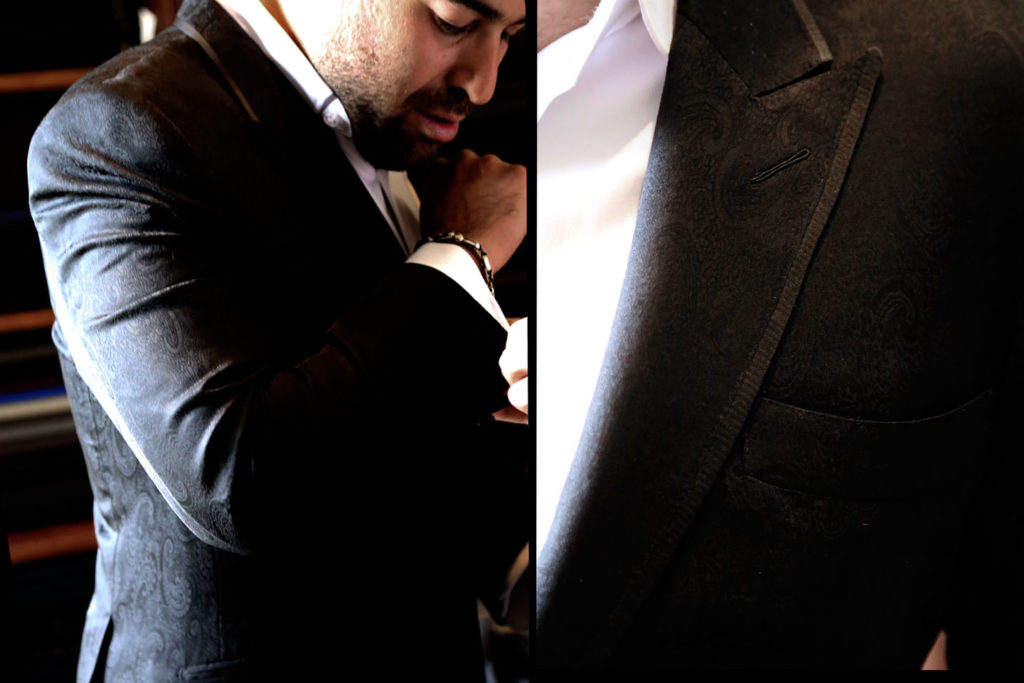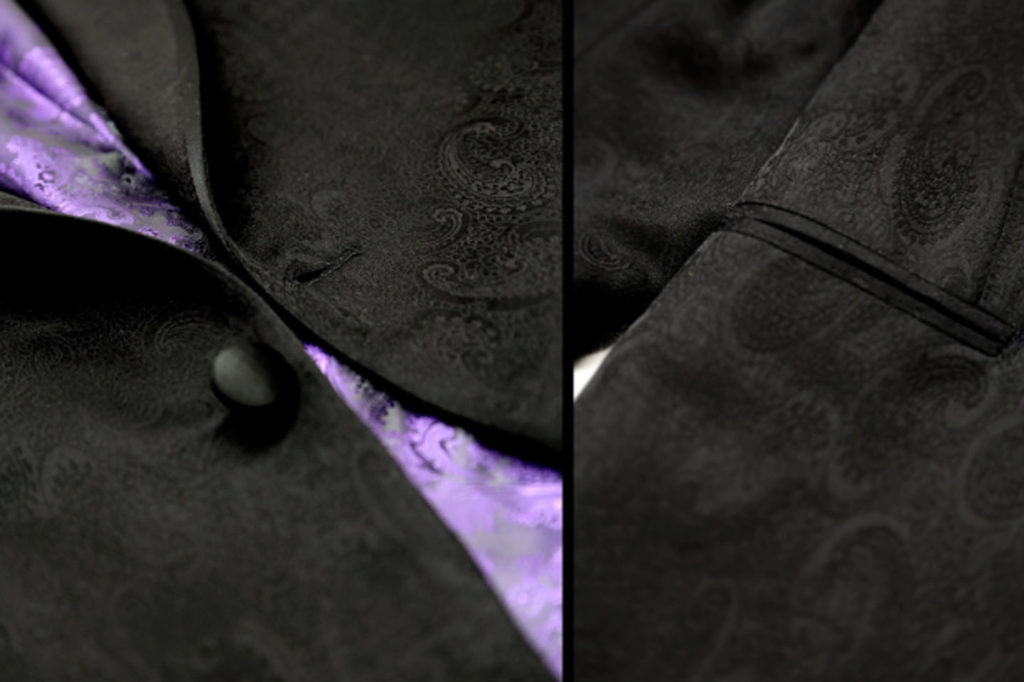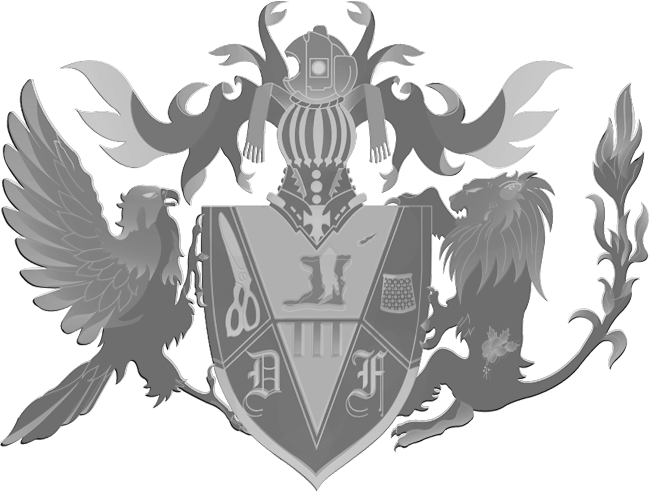
From the moment he walked in, we knew this patron would be a little different from the typical groom-to-be. D. is a laid-back man with an immediate sense of what he wants out of bespoke: black paisley. We knew we could immediately turn to Scabal’s ‘Festival’ line for a wool-silk blend that would give just the right amount of pop without being too overwhelming. A bespoke coat in black paisley with solid black trousers outfitted with a braid on the trouser jettings for a bit of visual interest. A matching black bow-tie and crisp white shirt with subtle grey contrasts top off the look. Sleek and suitably black-tie with plenty of character, as expected from true bespoke.
A week later, in a consultation with another new client, we pulled out Scabal’s ‘Festival’ collection and show another groom-to-be what kind of bold prints could be used to make a unique formal event suit. “Do people really do that?” he asked. “A whole jacket in silk paisley?” Of course –– we showed him D’s jacket in progress and he was floored. “I didn’t think it would be possible, but it works.” D’s coat was a favourite in the house and amongst clients for its time with us and even inspired other clients to try other pieces from Scabal’s ‘Festival’ line. This resulted in a navy-black floral dinner jacket and even a dark blue camouflage jacket.
Though today paisley patterns are still very common in suit linings, they have been very uncommon for the exterior of a coat for a number of centuries. However, in the 18th and 19th century, paisley found itself in vogue in the Western world after trade where British India brought boteh and Kashmir shawls to England. From there it was only a matter of time before it snuck into Savile Row in the form of ties, shirts, and eventually, bespoke suits.



